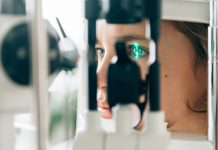Suzanne Wait and Catherine Whicher, from The Health Policy Partnership, suggest that digital health should prioritise the inclusion of women at its core
In recent years, recognition has grown of the need to give due priority to health issues that concern women,* and to ensure care reflects potential sex-based differences in disease risk and presentation, and treatment effectiveness.
The increasing digitalisation of healthcare presents a unique opportunity to address these needs, including developing digital tools tailored to women’s requirements as users, so-called ‘FemTech’. However, better engaging with women as health consumers is only part of the solution. We also need more women as leaders and shapers in the digitalisation of healthcare.
Digital health and innovation: Correcting historic biases
The attention paid to women’s health issues has historically been insufficient. Women have been deliberately excluded from clinical research trials, menopause has been overlooked in medical curricula, and women’s pain has been taken less seriously. Sex-based differences in risk, presentation, and optimal care pathways have also been overlooked, often resulting in a ‘one-size- fits-all’ care approach, based on data and research derived mostly from men.
Decades of research and funding disparities cannot be undone overnight. However, as our healthcare becomes digitalised, vigilance is required to ensure bias is not carried forward into new systems, models of care, and technologies.
Similarly, priorities for innovation should more accurately reflect the needs of the entire population, not just a portion of it. As health leaders around the world work to ensure greater equity across their health systems, all eyes are on digitalisation, as it presents a unique opportunity to create more equitable health systems.
Harnessing the data and the tools
How we use data and digital tools offers real potential to help address these issues. With improved data analysis capabilities facilitated by technologies such as the Cloud, we have new means of identifying and analysing inequities across populations, enabling more inclusive data collection, and adapting clinical research to ensure appropriate inclusion of women.
Digital health, virtual wards, and telemedicine can help address geographical, financial, and other barriers to access to care. Digital health tools that allow for data-informed self-monitoring may empower people to take a more proactive role in their health. These advances promise to result in better outcomes not just for women but for everyone.
Bridging gaps in digital health
If we want to ensure that digital health plays a role in advancing women’s health and is suited to meet their needs, an essential starting point is to include women in the development process; put simply, we need women leaders in technology. Unfortunately, the tech gender bias is not encouraging.
One 2022 report found that, in the tech industry, only 52 women are promoted to manager for every 100 men (compared with the all-industries average of 86 women per 100 men).
One 2022 report found that, in the tech industry, only 52 women are promoted to manager for every 100 men (compared with the all-industries average of 86 women per 100 men).
In the European Union, women make up just one in three STEM graduates and one in five information and communication technologies specialists.
Many initiatives are being developed to overcome this bias, and to train, retain, and elevate women in tech. In Estonia, after a female pupil was excluded from her school’s robotics club, her father realised that there was a need to teach technology differently to girls. So in 2018 he founded the HK Unicorn Squad. The movement, which now has over 160 learning groups, offers programmes tailored to the way girls learn, as well as summer camps and free educational materials.
Other programmes, such as Women Go Tech, seek to address the mentorship gap, which is often identified as a barrier to women’s advancement in the field. Initiatives such as AWS GetIT improve the talent pipeline by offering an educational course and competition to students of all backgrounds, in particular girls and other under- represented groups. The initiative currently teaches foundational tech skills to 12- to 14-year-olds in 13 countries and 14 languages.
Changing the algorithms
In addition to leadership, we must ensure women are included in the design of digital technologies. This is particularly true for AI because when it is trained on biased data, it delivers biased results.
Inclusive AI has been defined as a subfield of ethical AI, which accounts for different needs across the population. In this context, it would mean that the data included in AI-powered data analysis – and the algorithms driving that analysis – are sufficiently representative of women and their perspectives and needs. This concept has been coined as ‘algorithmovigilance’ – the scientific methods and activities related to evaluating, monitoring, understanding, and preventing adverse effects of algorithms in healthcare. Getting this right for women must become a cornerstone of digital health.
With health systems under unprecedented strain, there is a real sense of urgency to deliver change that will alleviate pressure and ‘fix’ whatever is broken. Measures that can help ‘level up’ care for 50% of the population need to be seen for the opportunity that they are, with benefits across all of society.
* We have used the word ‘women’ throughout this article as our focus is the area of healthcare traditionally known as ‘women’s health’, but we recognise that these issues affect people who may identify as other genders.
Disclaimer
This article follows the publication of Our Health in the Cloud, a report published in 2023 by The Health Policy Partnership with support and funding from Amazon Web Services.

This work is licensed under Creative Commons Attribution-NonCommercial-NoDerivatives 4.0 International.











